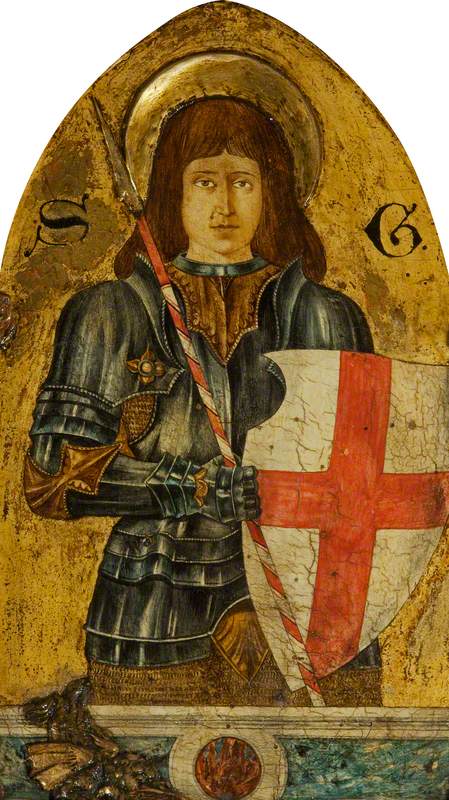Gregory of Nazianzus and the brothers Basil the Great and Gregory of Nyssa are known together as the Cappadocian Fathers, theologians whose writings in the ecclesiastically tumultuous decades between the first Council of Nicaea and the first Council of Constantinople helped secure the orthodoxy of the Nicene teaching on the Triune God in the Church. Gregory was born about 330 in Nazianzus in Cappadocia (in modern day Turkey), the son of the local bishop. He studied rhetoric in Athens, where Basil, his lifelong friend, and Julian, the future emperor who would be known as the “Apostate”, were fellow students. In 359 he left Athens to become a monk, leading a solitary life with Basil in beautiful surroundings in Pontus. Their theological discussions and manner of life bore fruit in Basil’s organizational talents and in the contemplative Gregory’s theological depth and penetrating thought. After two years, Gregory returned home to help his father, then eighty years old, administer his diocese and estates. In a town rent by heresies and schism, Gregory’s defense of his father’s orthodoxy in the face of a violent mob brought peace to the town and some fame to Gregory.
In 361, against his own inclination, Gregory was ordained to the presbyterate. He fled to Basil for ten weeks, but eventually returned to his new duties, resolved to live an austere, priestly life. He wrote an apology for his flight, and this work became a classic text on the nature and duties of the presbyterate.
Gregory was not to live in peace for long, however. His friend Basil had become the metropolitan bishop of Caesarea, and in his fight against the Arian emperor Valens, Basil compelled Gregory to be consecrated bishop of Sasima, an unhealthy border town, in order to maintain his own influence in an area under dispute with a rival bishop in Tyana. According to Gregory, Sasima was “a detestable little place without water or grass or any mark of civilization.” He felt like “a bone flung to the dogs”, and this episode caused a serious rift in the relationship between the two lifelong friends. Basil accused Gregory, who never visited Sasima, of slackness, while Gregory was prepared neither to live in a hostile and unpleasant town nor to become a pawn in ecclesiastical politics. Basil and Gregory were later reconciled, but their friendship never recovered its former warmth. Gregory continued as bishop coadjutor to his father at Nazianzus until his father’s death in 374. Gregory’s own health broke down in 375, and he lived in Seleucia for the next five years, during which time Basil died.
After the death of the Arian emperor Valens, who had persecuted the orthodox catholic Christians, peace returned to the Church. In 379, Gregory removed to Constantinople, where for over thirty years the Arians had been in the ascendancy. Orthodox believers even lacked a church in which to gather, and neighboring bishops had sent Gregory, against his protests, to restore the orthodox community in the city. Gregory appeared in Constantinople as a new man, no longer in despair, and as one afire with the love of God. He transformed his own house into a church, and there he preached his famous five sermons on the Trinity, discourses marked by clarity, strength, and a charming gaiety. Through his skillful and profound teaching his reputation spread, and his congregation increased. Arians attacked him by slander, insults, and violence, but Gregory persisted in preaching the faith and doctrine of Nicaea. In 381, the new and orthodox emperor Theodosius entered Constantinople and expelled the Arian bishop and his clergy. That same year the Council of Constantinople was convened and finally established and confirmed the conclusions of the Council of Nicaea as the authoritative teaching of the Church. It was during this Council that, on a rainy day, the crowds gathered in the Great Church of Hagia Sophia acclaimed Gregory bishop, after a ray of sunlight suddenly shone upon him.
However, opposition to him did not cease, and for the sake of peace he resigned the see of Constantinople and returned to his home town of Nazianzus, where he died in 389. Because of the clarity, power, and depth of his teaching on the Trinity, he is given the epithet the Theologian.
prepared from The Oxford Dictionary of Saints
and Lesser Feasts and Fasts (1980)
The Collect (of a Teacher of the Faith)
Almighty God, you gave your servant Gregory of Nazianzus special gifts of grace to understand and teach the truth revealed in Christ Jesus: Grant that by this teaching we may know you, the one true God, and Jesus Christ whom you have sent; who lives and reigns with you and the Holy Spirit, one God, for ever and ever. Amen.
_______________________________________________________
The icon of Saint Gregory Nazianzus is taken from the website of the Holy Transfiguration Monastery.











